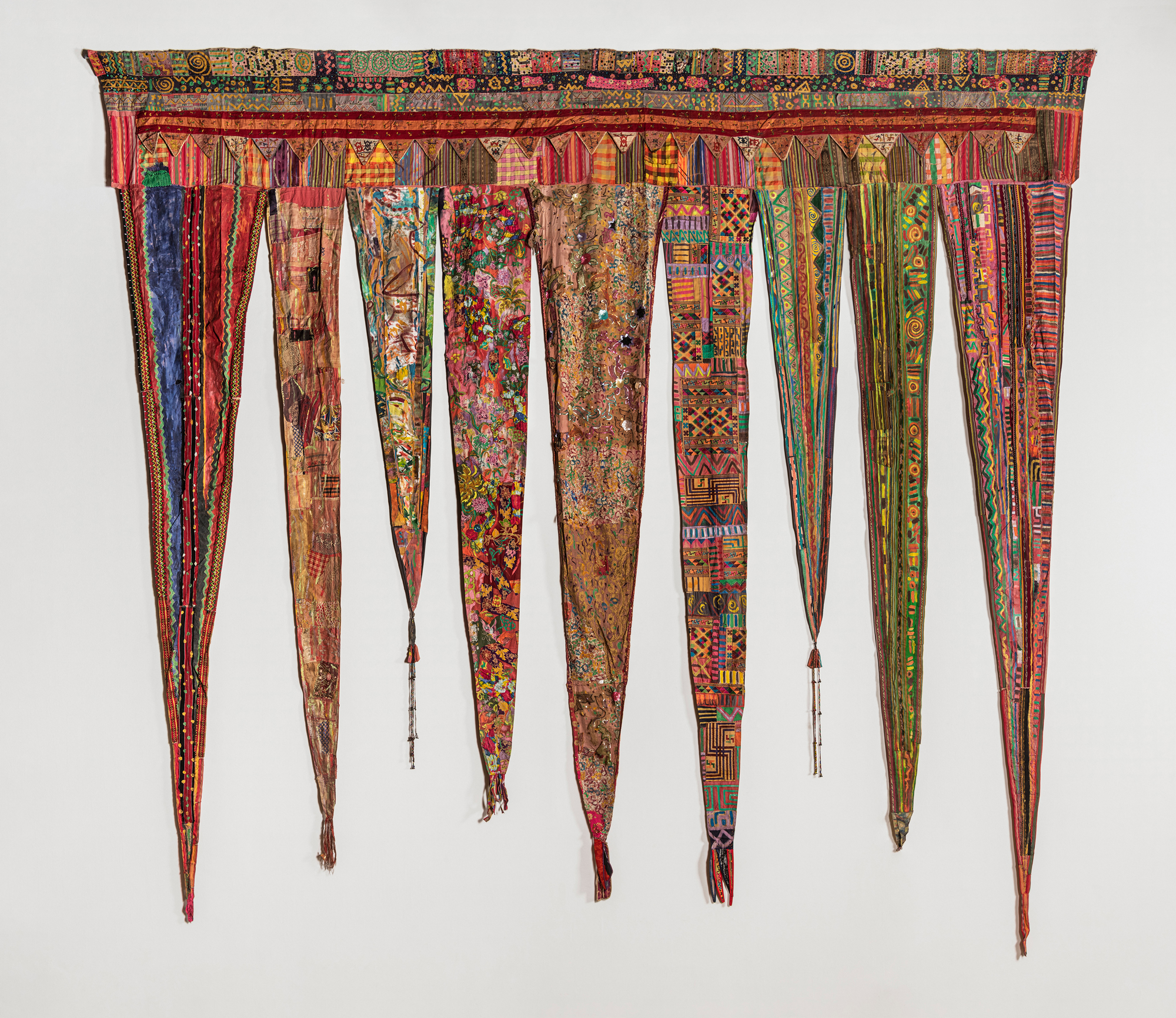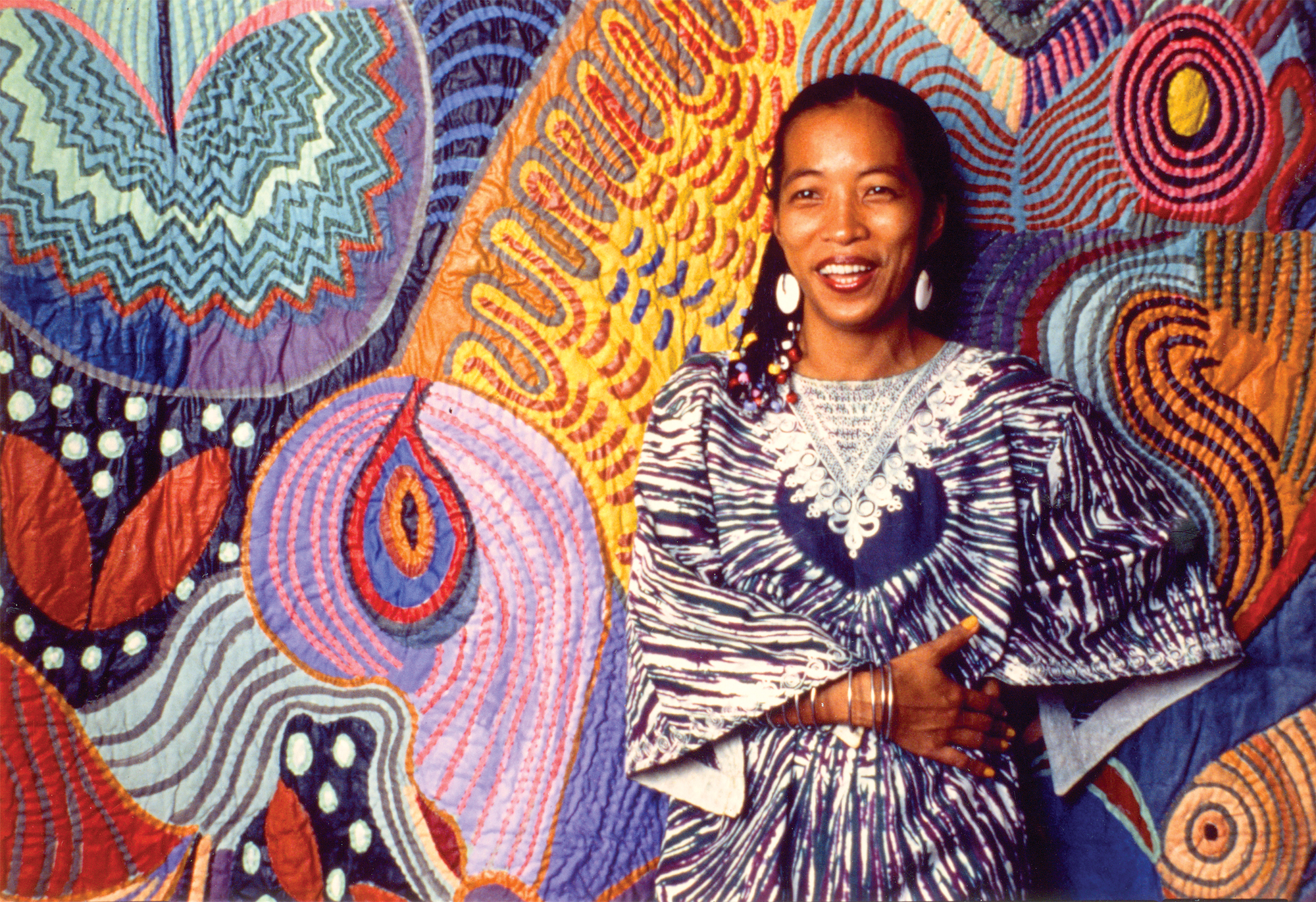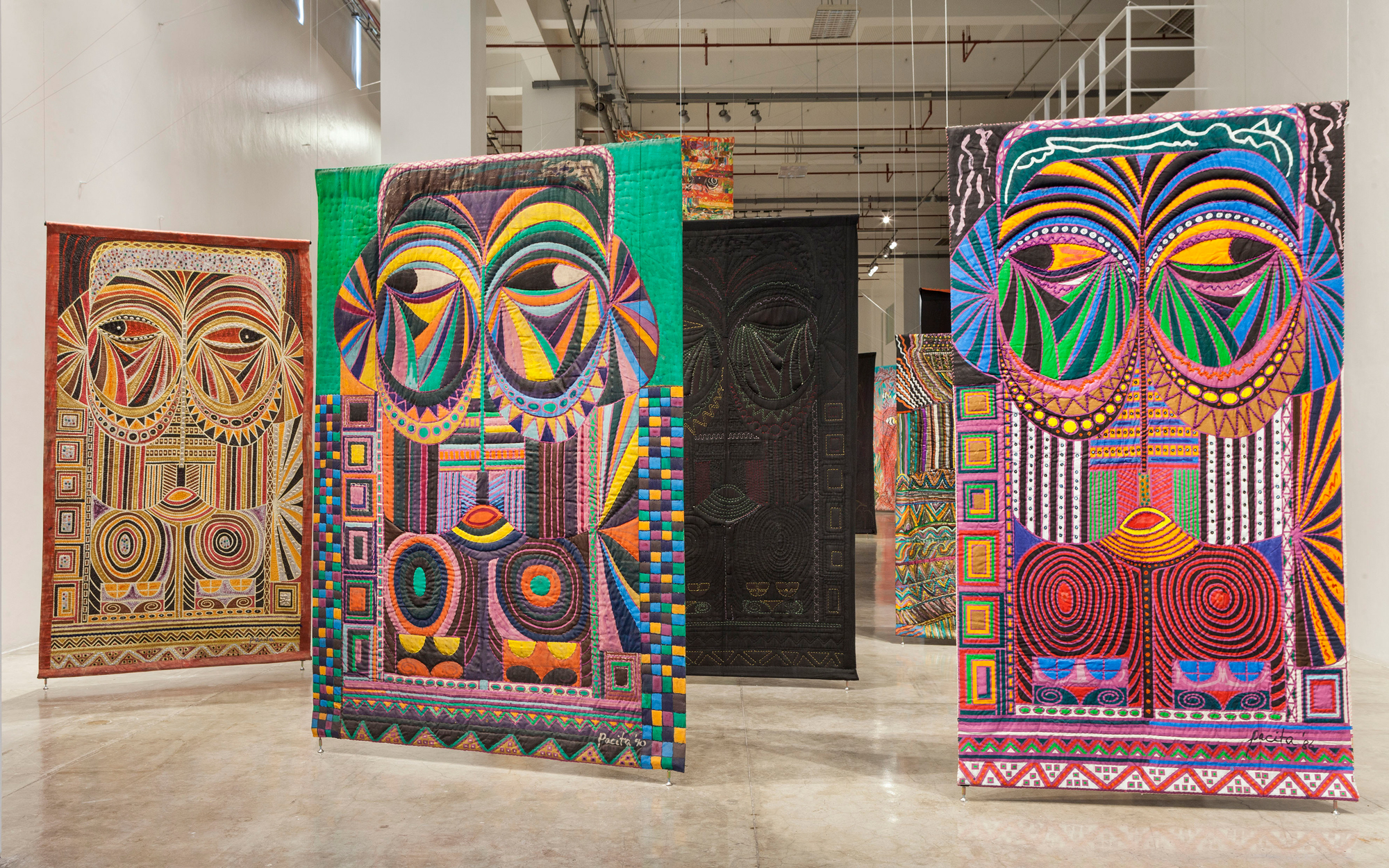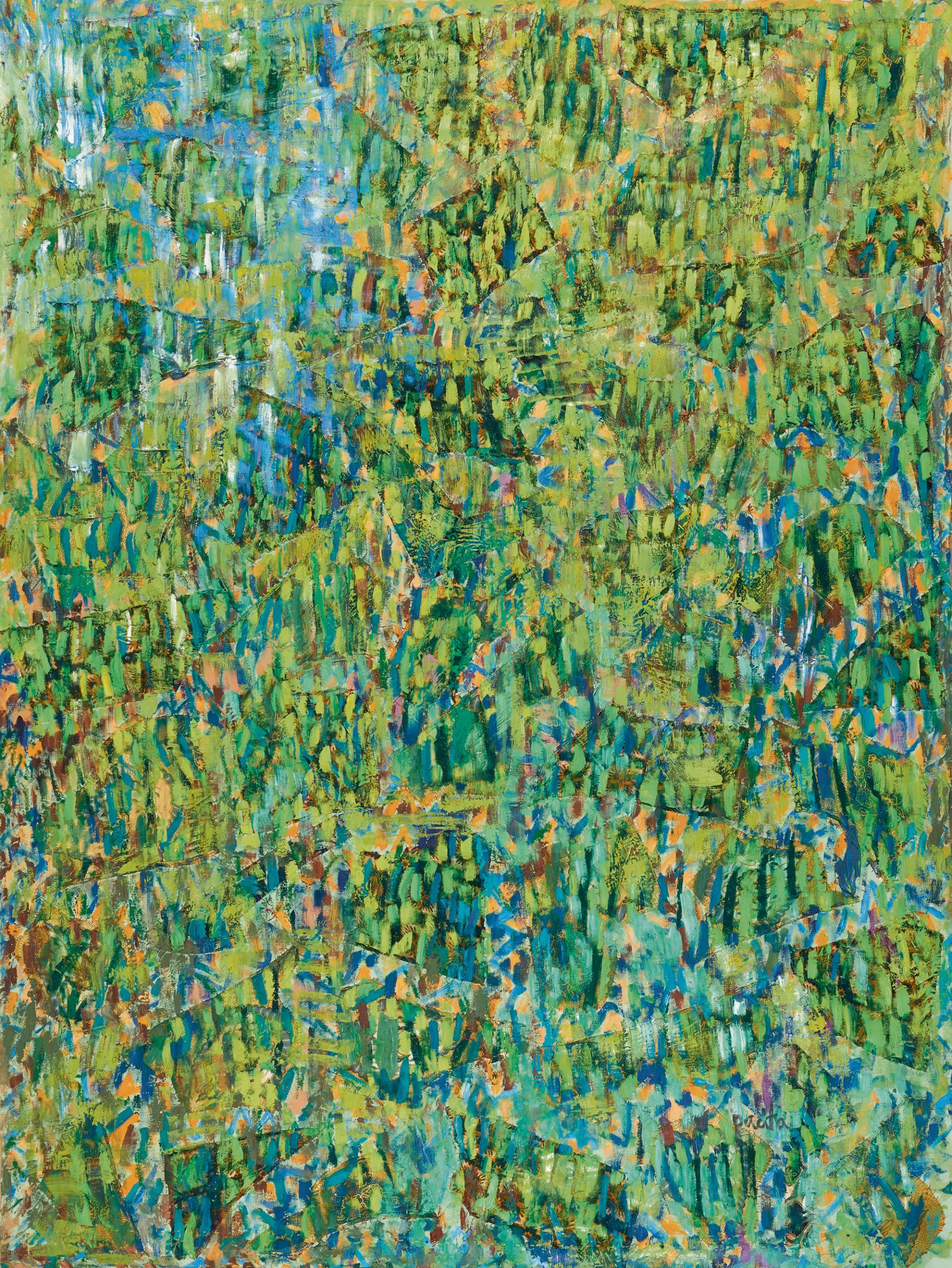
It’s fitting that the San Francisco Museum of Modern Art’s Pacita Abad retrospective opens with a kind of monumental celebratory bunting. 100 Years of Freedom: Batanes to Jolo stretches nearly floor to very-high ceiling, made up of fragments of Indigenous textile work from every province in the Philippines.
Abad made this piece in 1998, almost 30 years after she left the Philippines for what she thought would be a temporary stopover in San Francisco on her way to study law in Madrid. In this way, the SFMOMA show (and 100 Years of Freedom) welcome Abad’s art back to a city that introduced her to wider cultural and political movements. Her time here became the first leg of a lifetime of travel, which led to hands-on study, a deep engagement with traditional craft practices and exuberant, prolific artistic production.
As much as San Francisco might have a claim on Abad’s early adult years, it’s clear throughout the exhibition that she drew from a world of inspirations when making her work — Indonesian wayang puppets, cowrie shells from Papua New Guinea, a kite-maker in Jaipur, India. Over the course of her life, Abad lived in and visited 63 countries across six continents, creating over 5,000 artworks before her death from cancer in 2004 at the age of 58.

The SFMOMA version of this show, which was first mounted at the Walker Art Center, is more distilled, according to curators Eungie Joo and Nancy Lim. But a sizzling energy throughout the exhibition doesn’t leave much space to wonder about what might be missing. This is due in part to Abad’s vibrant palette, which spills out from her painted and embellished textile work onto the color-coded gallery walls (yellow, pink, green!).
That sizzle also comes from the density of her imagery and her additive approach to making. Abad began making trapuntos (stitched and stuffed painted canvases that exist somewhere between paintings and quilts) in 1981. In this show, a trapunto may list acrylic and oil paint, buttons, sequins, beads, yarn, ribbons and mirrors as its media. Colored thread dots the surfaces of these pieces, then reappears on the trapuntos’ otherwise blank versos, evidence of countless tiny piercings that could go unnoticed when taking in the full color and pattern of their frontsides.
Organized largely thematically, SFMOMA’s show opens with Abad’s early “Social Realist Works,” which includes paintings informed by her 1979 visits to the Thai-Cambodian border, where thousands of families from Vietnam, Cambodia and Laos were arriving on foot, seeking asylum. Based on her own photographs and those of photojournalist friends, Abad made work like Watching and Waiting (1979), a haunting painting depicting the faces of women and children behind barbed wire.

The 15-foot-wide Flight to Freedom (1980) occupies one whole wall of the exhibition, showing a broad line of refugees of all ages carrying bundles of their possessions. Originally conceived as a portable mural that could travel the world and alert new audiences to the refugees’ desperate situation, Abad hoped her art might have a more lasting effect than the fleeting news brief. “After the media coverage ends,” she said, “I want my paintings to keep staring at you.”
This is a notable quality of Abad’s work: its insistence on gazing back. Whether through painted figures, the eye-holes of masks, fish and other sea creatures, or the thousands of buttons and dots painstakingly applied across her surfaces, Abad’s art blasts into viewers’ retinas with eyes of its own. What’s so thrilling today comes from a past refusal of expectation or categorization.
In Masks from Six Continents (1990–93), a six-part textile piece made for the Washington, D.C. Metro Center, Abad created trapuntos referencing specific Indigenous cultures in Asia, Africa, Oceania and the Americas. The sixth, European Mask, is a pointed critique of the region’s appropriation and colonization of non-European cultures, with Abad humorously flattening European identity the same way Europeans so often flatten the identities of others.

Even in a room of seemingly abstract works, the panels of color, stitching and brushwork hit multiple reference points, citing places and moments from Abad’s own life. Spring is Coming (2001), a frenetic field of bright green, blue and goldenrod brushstrokes, evokes shafts of new growth emerging from the ground. Early One Morning (2003) practically assaults the senses with a rainbow of squiggles, dots, zigzags and circles. Abad, wildly prolific, wouldn’t let up, even after she was diagnosed with advanced lung cancer in 2001.
The final room of the exhibition, painted a dark blue-gray, is filled with the trapuntos Abad made after she began scuba diving. In these rich coral and fish-filled worlds, she depicts an expansive, freeing alternative to the reality on land, particularly during the Marcos dictatorship in the Philippines. In their depth and intricacy, these pieces might seem free of the cultural references and imagery that warmly populate the rest of Abad’s work. But as show curator Victoria Sung (formerly of the Walker, now at the Berkeley Art Museum and Pacific Film Archive) writes in her catalog essay, these underwater scenes demonstrate the extent of Abad’s ability to appreciate — and depict — webs of affinity that extend not just between people, but down to the ocean floor.

‘Pacita Abad’ is on view at the San Francisco Museum of Modern Art Oct. 21, 2023–Jan. 28, 2024. A free community day on Saturday, Oct. 21 runs 10 a.m.–5 p.m. with performances, talks and other events at the museum.